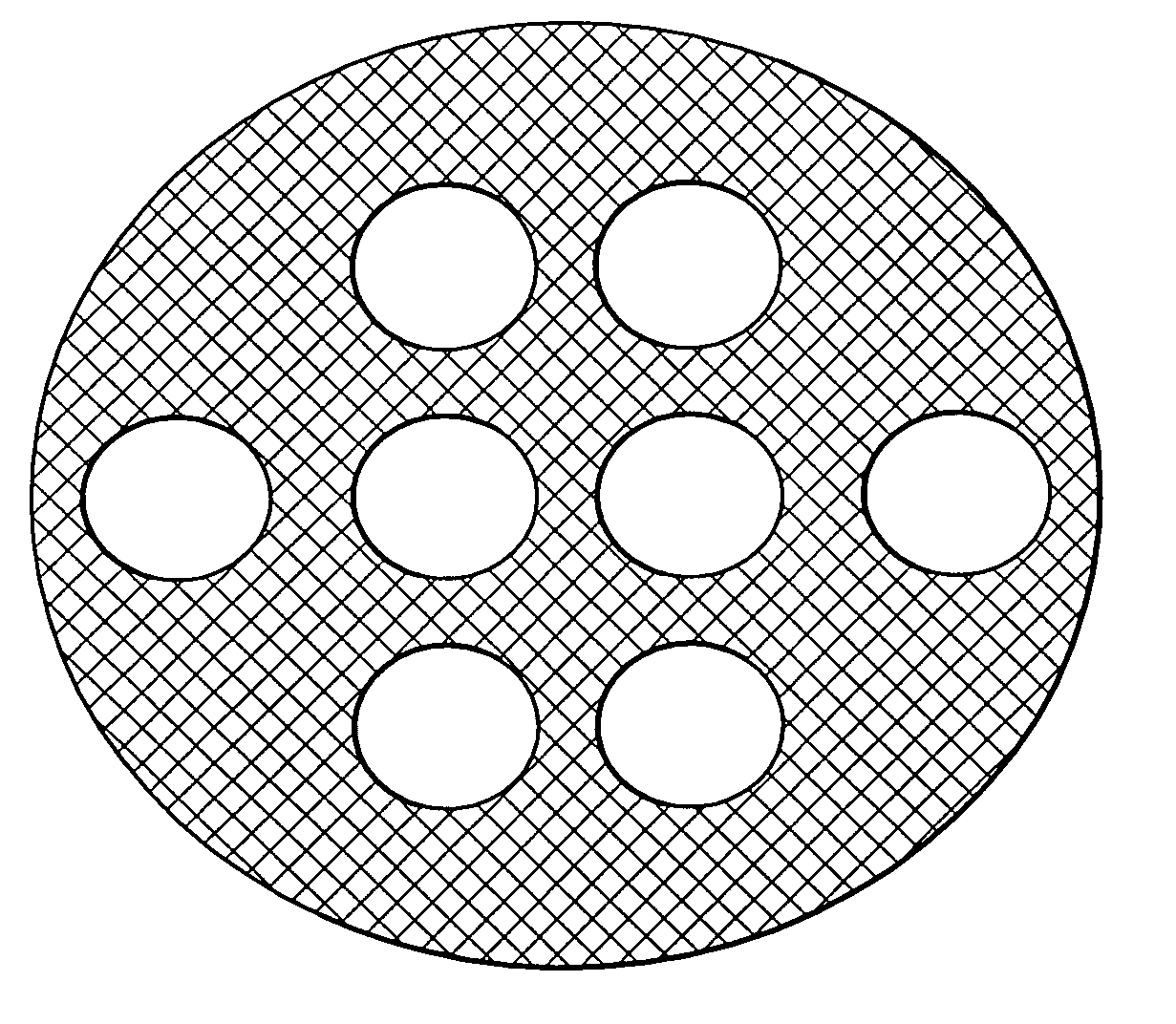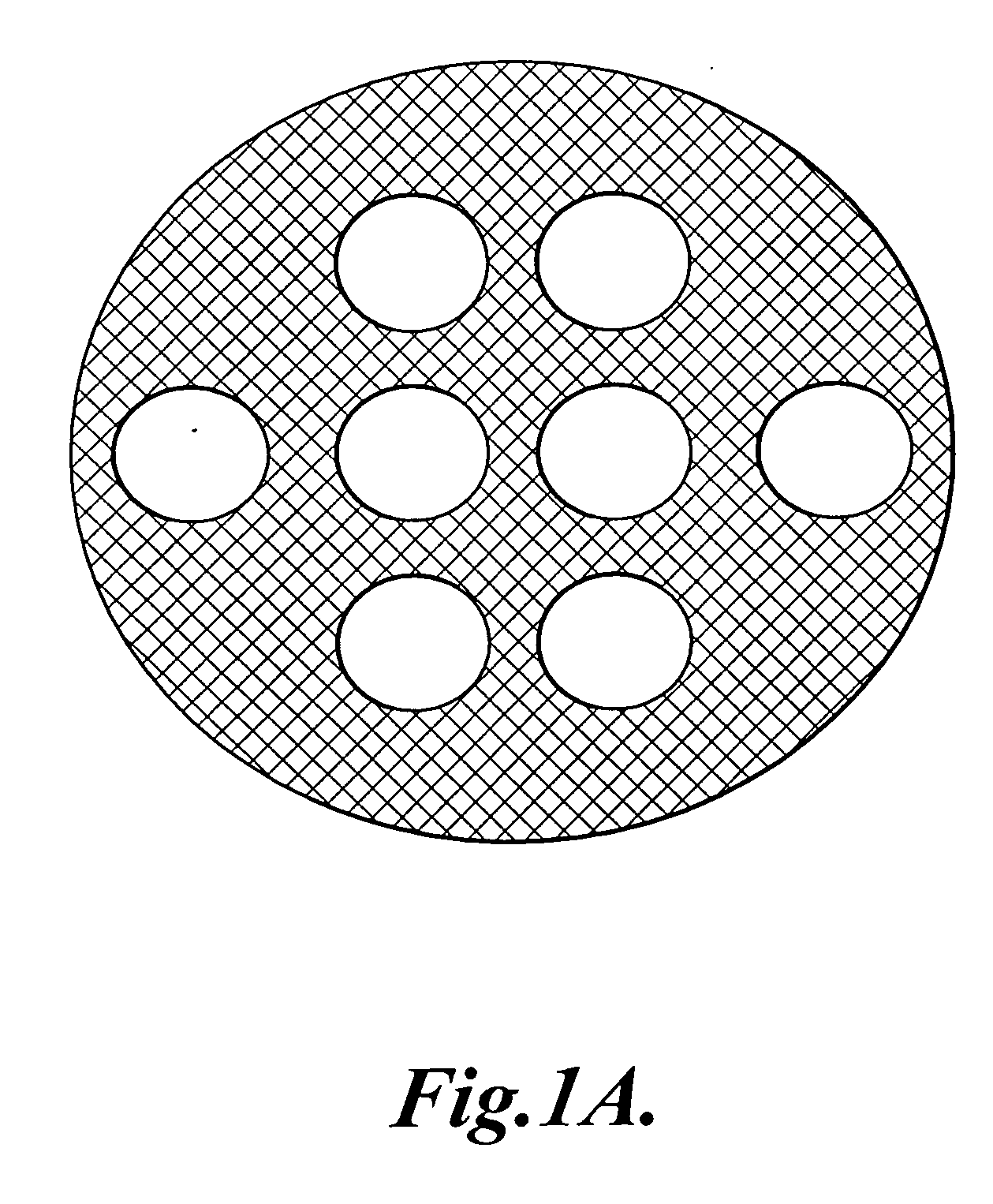Methods for photopatterning hydrogels
a hydrogel and photolithography technology, applied in the direction of prosthesis, instruments, photosensitive materials, etc., can solve the problems of high cost of patterning porous materials, limited pattern depth and resolution, and inability to achieve the effect of reducing the cost of specialized equipmen
- Summary
- Abstract
- Description
- Claims
- Application Information
AI Technical Summary
Benefits of technology
Problems solved by technology
Method used
Image
Examples
example 1
[0056] This example describes an exemplary method of the invention for forming photopatterned hydrogels.
[0057] A. Materials and Methods
[0058] Photomask: Photomasks with different opacities were created using transparency film in order to determine the difference in polymerization kinetics required to achieve a pattern. Photomasks were designed using Freehand Version 8 and printed onto a transparency film using a high-resolution printer with 3600 dpi. Initially, solid colored transparency films were produced with a range of opacities, where 0% opacity is clear and 100% opacity is black. The transmittance of 365 nm light was monitored for each mask opacity using a U / VIS spectrophotometer.
[0059] Photopolymerization: 2-Hydroxyethyl methacrylate (HEMA, Polysciences, Inc.), tetraethylene glycoldimethacrylate (TEGDM, Polysciences, Inc.) and 2,2-dimethoxy-2-phenylacetophenone (DMPA, Ciba-Geigy) were used as received. A monomer solution was prepared with 57-83% (v / v) 2-hydroxyethyl methac...
example 2
[0078] This example describes an exemplary method of the invention for forming degradable, photopatterned hydrogels.
[0079] A. Materials and Methods
[0080] Photomasks: Photomasks were generated as described in EXAMPLE 1. The pattern shown in FIG. 1A was drawn with 93% opacity and the regions where open channels were desired were clear (i.e., 0% opacity).
[0081] Degradable Crosslinker: Hydrolytically labile crosslinker, poly(ε-caprolactone)-b-tetraethylene glycol-b-poly(ε-caprolactone)dimethacrylate was synthesized according to previously described techniques (Sawhney et al. (1993) Macromolecules 26(4): 581-587). Briefly, tetraethylene glycol (5 ml) was reacted with ε-caprolactone (15-25 ml) at 140° C. in the presence of stannous octoate for 6 hours under vacuum. The reaction was cooled to room temperature and diluted with methylene chloride (50 ml). Triethylamine was added to the reaction mixture in 1.25 molar excess. Methacryloyl chloride (1.25 molar excess) was added dropwise to t...
example 3
[0087] This example describes an exemplary method of the invention for forming photopatterned, porous hydrogels.
[0088] A. Materials and Methods
[0089] Photomask: Photomasks were generated as described in EXAMPLE 1. The pattern shown in FIG. 2A was drawn with 93% opacity and the regions where open channels were desired were clear (i.e., 0% opacity).
[0090] Sphere Templating and Photopolymerization: A microsphere template was fabricated by using sieved linear poly(methyl methacrylate) microspheres with a molecular weight of 25K. The spheres were packed tightly together between two glass slides and a Teflon spacer (760 micrometers thick) and heated to 140° C. for 19 hours to fuse the spheres. The polymerization formulation described in EXAMPLE 1 was poured over the microsphere template and a photomask was placed on top. The sample was exposed to 365 nm light with an incident light intensity of 850 mW / cm2 under the 0% opacity regions of the photomask and 45 mW / cm2 under the 93% opacity...
PUM
| Property | Measurement | Unit |
|---|---|---|
| Thickness | aaaaa | aaaaa |
| Thickness | aaaaa | aaaaa |
| Thickness | aaaaa | aaaaa |
Abstract
Description
Claims
Application Information
 Login to View More
Login to View More - R&D
- Intellectual Property
- Life Sciences
- Materials
- Tech Scout
- Unparalleled Data Quality
- Higher Quality Content
- 60% Fewer Hallucinations
Browse by: Latest US Patents, China's latest patents, Technical Efficacy Thesaurus, Application Domain, Technology Topic, Popular Technical Reports.
© 2025 PatSnap. All rights reserved.Legal|Privacy policy|Modern Slavery Act Transparency Statement|Sitemap|About US| Contact US: help@patsnap.com



